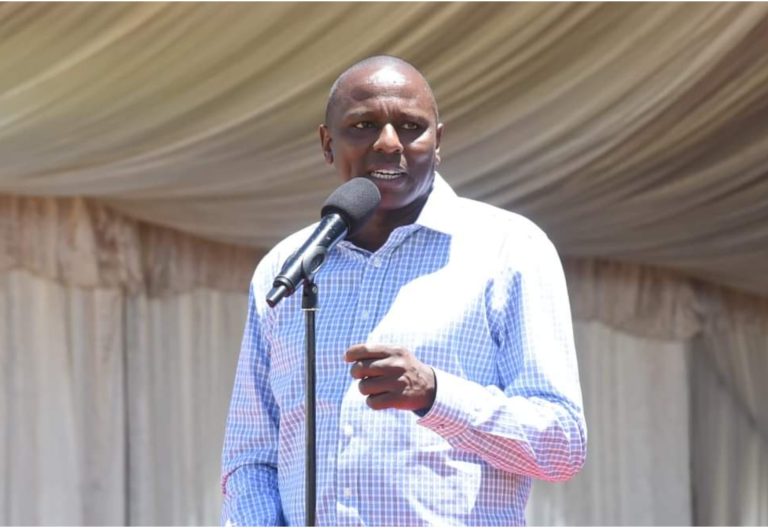Title deeds changing lives in Mt Kenya’s informal settlements

In the heart of Kenya’s Central Highlands, where the slopes of Mount Kenya cradle the counties of Kirinyaga, Meru, Tharaka Nithi and Nyeri, the Kenya Informal Settlements Improvement Project (KISIP2) is transforming lives – one community at a time.
Beyond the rolling hills and vibrant farmlands, this initiative is weaving stories of resilience, hope, and empowerment.
Through KISIP2’s interventions—land tenure security, improved infrastructure, and community-driven development—these regions are not just seeing physical upgrades but also the rekindling of dreams for families long marginalized.
This is the story of how access to basic services and a sense of ownership are planting seeds of change, nurturing stronger, more vibrant communities against the backdrop of Mount Kenya’s timeless majesty.
For Peter Kagai, 80, a farmer and a father of eight, the issuance of title deed has been a game-changer.
Colonial villages
“As a resident in the one of colonial villages, I now own a title deed and this has greatly improved my life. I can now take a bank loan and educate my children with the cash even as I invest in my farm,” says Kagai, an elder from Kamuiri colonial village, Nyeri County.
Ruth Wachira, a farmer from Choron’gi colonial settlement is all smiles.
A single mother who now has a title deed to her home, the move to secure her family’s future and connect to the piped water system has sparked dreams of starting a small farm.
“I want to thank KISIP2 for this. See, I can access piped water erected into my home which has a title. It is a dream come true after many years of my forefathers settling in these colonial villages,” Ruth Wahira notes.
The Second Kenya Informal Settlements Improvement Project (KISIP 2) is a jointly funded project by the World Bank – Internal Development Association (IDA), Agence Française de Development (AFD), the European Union (EU) and the Government of Kenya (GOK).
The project is domiciled at the State Department for Housing and Urban Development.
The project development objective is “to improve access to basic services and land tenure security of residents in participating urban informal settlements and strengthen institutional capacity for slum upgrading in Kenya.
Informal settlements
Currently working in around 40 counties, KISIP2 has been a beacon of hope for residents of informal settlements across Kenya.
In Meru, Nyeri, Tharaka Nithi, and Kirinyaga counties, KISIP’s interventions have brought tangible improvements in living conditions, security of tenure, and community-driven infrastructure development, aligning with Kenya’s Vision 2030 and the National Slum Upgrading Strategy.
In Meru County, home to over 1.5 million people and a vibrant agricultural hub, KISIP2 has focused on upgrading informal settlements in urban informal settlements like Majengo, Mjini and Salama.
Infrastructure investments have also been pivotal. KISIP2 has constructed gravel roads, installed solar-powered streetlights, and improved drainage systems.
These upgrades have reduced flooding, enhanced safety, and improved access to markets for small-scale traders, many of whom are women.
For instance, Mary Mwende, a vegetable vendor in Majengo, shared, “Before KISIP, rains would destroy our paths and make business impossible.
Now, I can transport my goods easily, and customers feel safer shopping at night.”
Nyeri County, a key agricultural and cultural centre in the Mount Kenya region, has seen significant KISIP2 interventions in informal settlements like Majengo and Kiawara.
The project has supported the approval of 13 PDPs, paving the way for over 1,470 titles to be prepared, with 540 already issued.
This has empowered residents to invest in permanent housing and small businesses, boosting local economies.
Infrastructure upgrades in Nyeri include the construction of tarmacked roads, footpaths, and sanitation facilities.
In Majengo, a new sewer line has improved hygiene and reduced waterborne diseases, while high-mast floodlights have enhanced security.
John Kamau, a boda boda operator, noted, “The roads and lights have made my work easier. I can now operate late without fear, and my income has doubled.”
Tharaka Nithi, a county of 393,177 residents with a mix of fertile highlands and arid lowlands, faces unique challenges in its informal settlements, particularly in Marimanti and Kathwana centres.
Settlements in Chuka are nearing completion, with plans to issue over 300 titles. This has given residents like Esther Muthoni, a single mother, confidence to build a permanent home: “I no longer fear losing my plot. I’m saving to add a shop to my house.”
Water scarcity
Infrastructure projects include gravel roads, culverts, and water harvesting systems to address water scarcity in Tharaka’s arid zones.
In Marimanti, KISIP-funded boreholes, once completed, will provide clean water to over 1,000 households, reducing conflicts over water resources.
KISIP’s work in Tharaka Nithi complements county-led development, such as the road marshals initiative, which has maintained KISIP2-funded roads.
Kirinyaga County, renowned for its rice production and proximity to Mount Kenya, has benefited from KISIP’s interventions in informal settlements around Kerugoya and Kutus.
The project has supported land surveys and planning, with draft PDPs for 10 settlements ready for approval.
This has set the stage for issuing over 800 titles, empowering residents to access loans and invest in housing. Infrastructure upgrades include all-weather roads, drainage systems, and public toilets, which have transformed settlements like Kiangwaci.
Jane Wanjiku, a tailor in Kerugoya, said, “The new roads have brought more customers to my shop. I can now afford school fees for my children.”
In Meru, Nyeri, Tharaka Nithi, and Kirinyaga, KISIP’s impact is undeniable. From secure land titles to better roads, water, and sanitation, the project has improved lives and laid the foundation for sustainable urbanisation.
By empowering communities, strengthening institutions, and fostering inclusive growth, KISIP2 is not just upgrading settlements—it’s building brighter futures for the people of Meru, Nyeri, Tharaka Nithi, and Kirinyaga.











